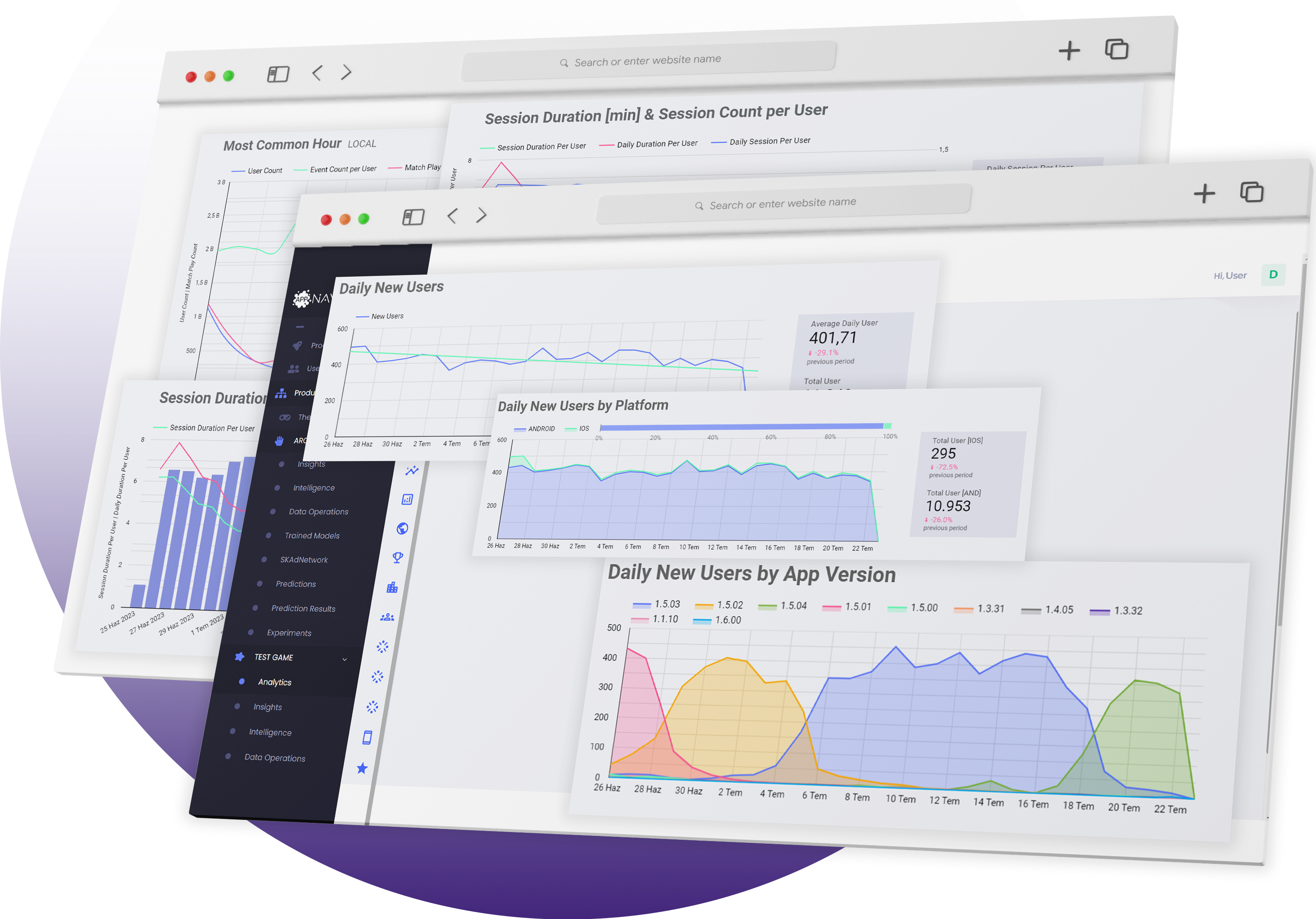1. Introduction
Mobile game user acquisition and monetization have faced notable challenges. New privacy regulations and a crowded market have heavily impacted the workload of UA and Product Managers.
Struggles with skyrocketing UA costs due to fierce competition and ineffective targeting makes it tough to meet their UA budget goals. High competition often leads to costs that exceed the revenue from users with low or uncertain LTV, making it hard to justify increased spending and achieve ROAS targets.
In this article, we will explore the biggest challenges and potential solutions to scaling your UA budgets effectively through LTV prediction.

2. UA Budget optimization and ROAS Target Challenge
Here are the most common challenges we hear from game developers and publishers:
- Skyrocketing User Acquisition Costs: As competition intensifies, the cost to acquire new users continues to rise.
- Fierce Market Competition: Countless games are competing for the attention of a finite user base, making it harder to stand out.
- Ineffective Targeting Strategies: Poorly tuned targeting can lead to wasted spend and lower ROAS (Return on Ad Spend).
- Creative Ideation & Testing: Privacy regulations limit data access, pushing marketers to use available first-party data to create engaging content for a wider audience.
- Fragmented Landscape: The mobile games landscape is completely fragmented by iOS and Android.
- Uncertain or Low LTV: When the lifetime value of users is unclear or low, it’s challenging to justify higher UA spending.
- High Churn Rates Retaining users is as crucial as acquiring them, and high churn rates can severely impact profitability.
- Inability to hit target spend due to low LTV: Due to inability on targeting, UA efforts result in acquiring low LTV users, thus not hitting the budget goals.

3. How to overcome these challenges: Predictions!
Why LTV Predictions Matter for Scaling UA Budgets
Accurate LTV predictions and effective monetization are essential for efficient budget allocation. Without them, companies risk missing opportunities and underperforming in their UA efforts. By predicting which users are likely to generate more revenue, developers can focus their UA strategies on attracting high-value users. For instance, if LTV predictions indicate that specific user segments from certain campaigns are more likely to spend, you can direct your UA budget towards channels that attract these valuable users.
Until recently, acting on this capability meant making decisions about whether to continue or stop campaigns, reallocating budgets, and adjusting bidding strategies for campaigns, ad sets, creatives, and keywords every few hours or days. This was done by aggregating cohort-level predictions on pROAS (predicted ROAS). This approach was primarily the domain of large brands, giving them a significant competitive edge. However, there was no way to harness user-level predictions or adjust bids for users in different value segments. Automating this process without developing a custom real-time bidding system was previously impossible.
The integration of technologies like Facebook's Conversions API and Google’s Server-Side Tagging further enhances this capability by allowing real-time optimization based on LTV scores. This technology facilitates the sharing of user-level signals directly from server to server, enabling more precise campaign adjustments and automated bidding.
From a macro point of view: Why should you increase your game’s overall LTV?
"Balancing our monetization mix is one of our top priorities. At 52 Entertainment, we manage a diverse portfolio of in-app purchases (IAP) and in-app ads (IAA) across our games. We are dedicated to achieving revenue diversification throughout our business, which is crucial for mitigating the impact of the rising Cost Per Install (CPI) that our industry is currently facing."
— Vincent Tessier, CMO, 52 Entertainment
(Source: Gamesforum)
Obviously, you want it—who doesn’t? Increasing the overall LTV of your game significantly impacts your UA efforts because everything is connected. A higher LTV is not just a nice-to-have; it’s crucial for your UA strategy and financial success. With a higher LTV, you can justify and allocate more substantial UA budgets effectively. When you know which user segments are likely to generate more revenue, you can confidently invest more in acquiring these high-value users. This focused approach ensures that your UA spend is optimized, improving your return on ad spend (ROAS) and overall profitability.
By understanding player behavior and predicting revenue potential, you can implement personalized monetization strategies, such as targeted offers and tailored in-game events. In the climate of high CPIs, lacking the right monetization strategy can lead to low LTV users, making it difficult to reach your ROAS goals. By enhancing overall monetization, you can increase your CPIs and scale your campaign budgets in ad networks.
However, achieving a higher LTV comes with its own set of challenges. The landscape of mobile game monetization is evolving, and traditional methods face limitations. Redistributing revenue between in-app ads (IAA) and in-app purchases (IAP) has become less effective as rising CPIs and decreasing eCPMs create barriers to maximizing ad revenue potential. Publishers are responding by diversifying their portfolios, exploring more hybrid games, and focusing on deeper audience segmentation based on LTV and preferred revenue splits.

4. How AppNava Can Boost Your UA Operations
AppNava offers user-level and cohort-level LTV predictions to effectively manage UA campaigns from the outset. Starting from the very first day, publishers can not only receive predictions on the success of their campaigns but also see the ROAS targets early on. This enables marketing teams to evaluate the performance of a campaign without waiting for months, allowing them to make swift decisions to either boost or close the campaign accordingly.
-
AppNava Delivers the Most Precise LTV Predictions:
Machine learning models can significantly enhance your user acquisition (UA) operations by offering precise Lifetime Value (LTV) predictions based on campaign level. Traditionally, optimizing UA strategies involved broad cohort-level predictions and basic decisions on whether to keep or kill campaigns. However, AppNava's advanced analytics provide a more granular view, making it possible to refine your bidding strategies to focus on high-value user segments.
-
AppNava Optimizes Your Budget and Refines Your Bidding Strategy:
By leveraging detailed LTV predictions, AppNava allows you to adjust your bids and Cost Per Install (CPI) based on the revenue potential of various user segments. This means you can increase bids for users with higher predicted LTVs, ensuring your acquisition costs align with their revenue potential, thus maximizing efficiency and ROI.
-
AppNava Transforms Your Game Economy into a Smarter, More Dynamic System:
In addition to refining bidding strategies, AppNava’s insights help you turn data into actionable strategies. By predicting LTV, churn, and in-app purchases (IAP), AppNava enables you to implement dynamic monetization tactics such as targeted offers, dynamic pricing, and tailored in-game events. These strategies are designed to maximize revenue from high-value users while proactively addressing churn risks through retention campaigns. This topic deserves its own blog post, which you can read here.
-
AppNava Elevates Your UA Team with Advanced Analytics:
Appnava simplifies the challenging process of becoming a data-oriented and analytical UA team. In an industry where making sense of vast amounts of data and training machine learning models can be daunting, Appnava bridges the gap by turning complex data into clear, actionable insights. It empowers your team to make informed decisions without requiring deep technical expertise, allowing them to focus on optimizing campaigns and targeting high-value users with precision. By automating these processes, Appnava enables your team to easily embrace a data-driven approach, giving you a competitive edge in the fast-paced mobile gaming landscape.
5. Implementing LTV predictions for your games
Having similar challenges in your day-to-day work? Book a call with us to speak about AppNava’s ML-powered prediction models and let’s have you test the prediction solutions that many companies are benefiting from.



